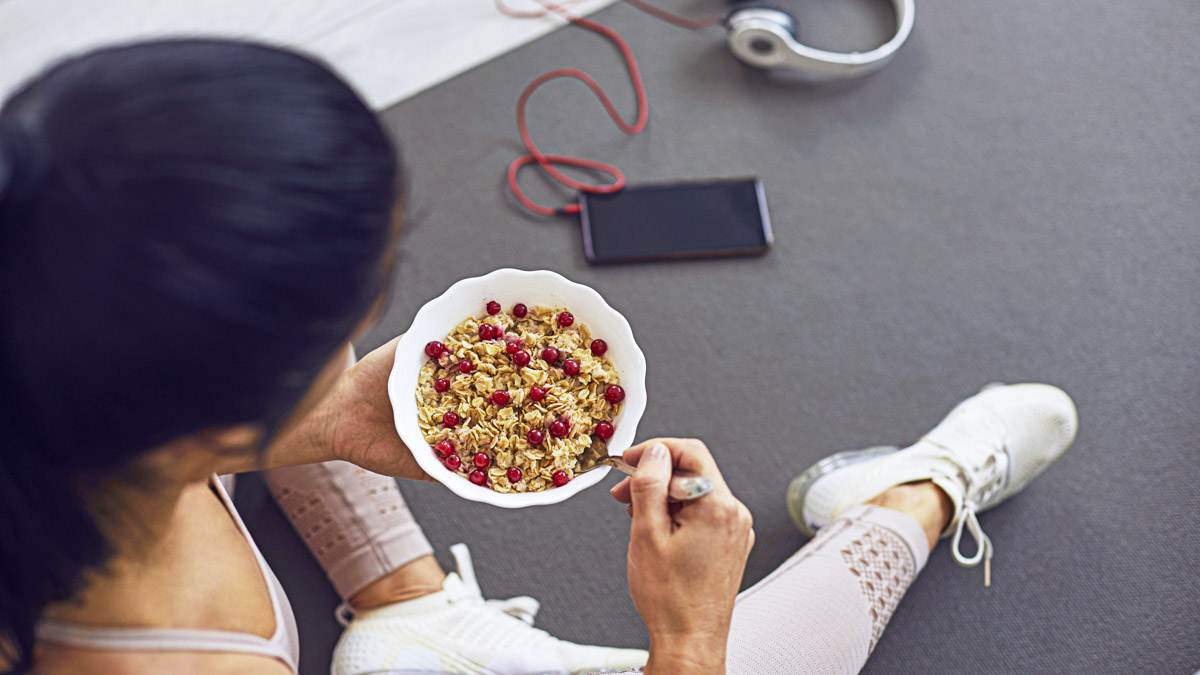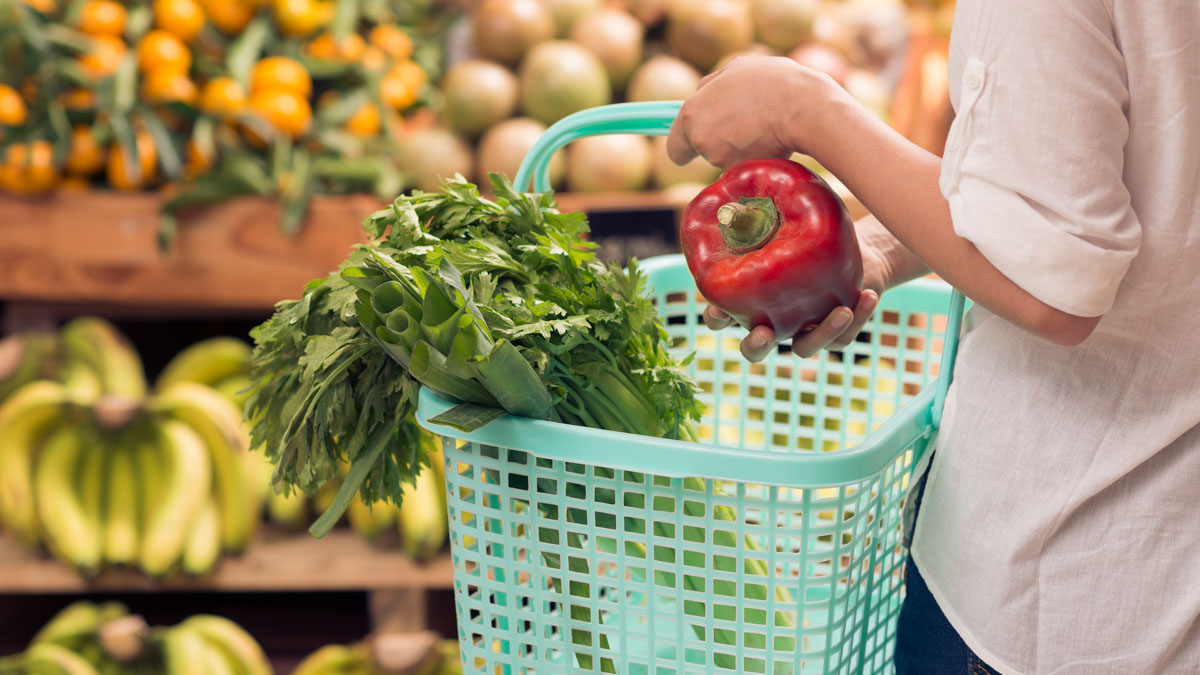It’s a new year, and there are plenty of reasons to be mindful of how your diet influences your health and performance. Including more plant-based foods can positively affect your health and might be the shift that allows you to creatively diversify your menu, feel good about your food choices, and fuel your way to success.
A 2020 review of plant-based diets concluded that it is “unlikely plant-based diets offer advantages… compared to omnivorous diets for strength, anaerobic, or aerobic exercise performance”, though there are no apparent disadvantages. There are certainly benefits of plant-based diets, however, as the authors note “they do reduce the risk of developing numerous chronic diseases and use less natural resources compared to meat-containing diets.”
Getting Enough Protein on a Plant-Based Diet
Questions about adequate protein intake while eating more plants and fewer animal products are common. While the U.S. Recommended Dietary Allowance (RDA) for healthy adults suggests .8 g of protein per kilogram of body mass per day, the consensus is that athletes should aim higher — around 1.6 g of protein per kilogram of body mass per day. Beginning in their forties, Masters athletes need an even higher amount — around 2 g of protein per kilogram of body mass per day according to recent data.
Achieving adequate protein consumption can seem like a large undertaking on a plant-based diet, but it is doable. Plant-Based Sports Nutrition explains that “despite the controversy over protein needs of vegetarians and athletes, you can easily meet your protein needs — even if they are in the upper level recommended — on a plant-based diet.” The key is to combine a variety of foods throughout the day to ensure you’re getting the protein you need.
Focusing on plant foods that provide essential amino acids — which are required for the synthesis of protein — is a good place to start. These include quinoa and soy-derived products such as tofu and tempeh. Combining foods, like rice and beans, soups with beans and vegetables and whole-grain bread, corn tortillas with black beans, or even peanut butter toast can offer similar nutrients. Edamame, hemp seeds, hummus, beans and peas, and many nuts, seeds, and legumes are high in protein. Spinach and broccoli, two super powerhouse vegetables, contain protein that includes all the essential amino acids and vitamins A, C, folate, and a wide array of minerals.
Plant-Based Protein Sources to Add to Your Grocery List
Shifting to more plants doesn’t have to be fussy or more time-consuming. Here is a list of some of the top protein performers for your weekly shopping list. Keep scrolling for links to a few great recipes to jumpstart your year.
- Oats: a half-cup serving provides 5 g of protein
- Peanuts: one-quarter cup provides 9 g of protein, while almonds and pistachios are close behind with 7 g and 6 g, respectively
- Soy and pea milk come in highest at 8 g per cup; oat milk has 4 g
- Nutritional Yeast: if you haven’t tried this yet, you’re missing out. Fantastic on popcorn and makes a good cheese sauce when mixed with cashews. A 2 tbsp serving of “Nooch” has 8 g of protein and is a complete (contains all amino acids) protein.
- Seitan, Tofu, Tempeh: seitan is wheat gluten and whops the protein scale with 100 g having 75 g of protein. Tofu and tempeh, both made from soybeans, offer 8 g and 16 g of protein. Think big with these nutrient-packed foods — salads, sandwiches, curries, and soups are just the beginning.
- Chia Seeds: 1 oz (about 2 Tbsp) contains 4.7 g of protein plus lots of fiber and vitamins.
- Ground flaxseed: easier to digest than whole, and high in fiber and omega-3 fatty acids, with around 2 g protein per tbsp
- Broccoli: 1 cup has 3 g of protein while spinach has .7 g. Note, cruciferous vegetables and dark leafy greens are top on the nutrition density list and should join other vegetables in your regular rotation.
Plant-Based Recipes to Add to Your Weekly Repertoire
An excellent winter vegetable soup can be found on the blog Love and Lemons and has lots of room for improvising. Hit the farm stand or grocery store weekly and see what vegetables look good. Then, adapt to a slow cooker and come home to hot soup. Add some locally made whole grain bread on the side for a more filling and protein-rich meal.
This Broccoli and Tofu Takeout Style from Tasty combines the nutrient power of tofu and broccoli with soy sauce, garlic, and ginger for a sticky, delicious dinner or lunch. Experiment with variations, including using seitan or tempeh instead of tofu.
Finally, here is an easy fried rice recipe from Cookie and Kate that gives lots of options for vegetable choice and can be made vegan by dropping the egg with the possibility of adding shelled edamame instead.
Start your new year right with a focus on plant-based eating. The choices you make to fuel yourself will impact your daily performance as well as the health of both your body and the environment.
References
Breen, L. (n.d.). Dietary protein requirements for older athletes. Retrieved from https://www.mysportscience.com/post/2017/10/18/dietary-protein-requirements-for-older-athletes
Larson-Meyer, D.E. & Ruscigno, M. (2020). Plant-Based Sports Nutrition: Expert fueling strategies for training, recovery, and performance. Human Kinetics.
Lynch, H. et al. (2018, December 1). Plant-Based Diets: Considerations for Environmental Impact, Protein Quality, and Exercise Performance. Retrieved from https://pubmed.ncbi.nlm.nih.gov/30513704/
St. John, A. (2020, August 14). How Much Protein Do Your Athletes Really Need?: Recommendations for both endurance and power athletes. Retrieved from https://www.scienceforsport.com/how-much-protein-do-your-athletes-really-need/







